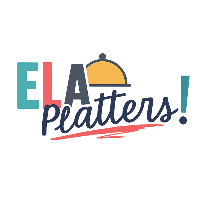Think about a classroom like a garden — each student is a unique flower needing different care to bloom. Differentiation is the practice of tailoring instruction to meet individual student needs. Instead of a one-size-fits-all approach, it allows every learner to thrive at their own pace, with their own style.
Why Differentiation Matters in Today’s Classrooms
Today’s classrooms are more diverse than ever. Different backgrounds, skills, and learning preferences demand flexibility. Differentiation isn’t just a nice-to-have; it’s essential for ensuring every student has the opportunity to succeed.
Understanding Mentor Texts
Defining Mentor Texts
Mentor texts are examples of excellent writing (or speaking, drawing, or any other form of expression) that students can study and emulate. They’re like a blueprint for success — showing students how to craft their work rather than just telling them.
The Purpose of Mentor Texts in Learning
Mentor texts serve as guides, not rules. They inspire, model techniques, and open doors for creativity. They demystify what quality work looks like and encourage students to take risks and find their own voices.
How Differentiation and Mentor Texts Intersect
The Role of Mentor Texts in a Differentiated Classroom
Mentor texts naturally fit into differentiation. A single mentor text can be approached in many ways, depending on a student’s needs. Some might analyze structure, others might focus on language. It’s all about adjusting the lens through which the mentor text is studied.
Tailoring Mentor Texts to Student Needs
You can select mentor texts based on reading level, interests, cultural relevance, and writing style. Think of it like creating a custom playlist for each learner — each text resonates differently and fuels personalized growth.
Benefits of Using Mentor Texts for Differentiation
Meeting Diverse Learning Styles
Some students are visual learners. Others thrive on auditory or kinesthetic experiences. Mentor texts come in many forms — stories, speeches, poems, and even videos — meeting students wherever they are.
Building Student Confidence and Independence
Seeing real-world examples empowers students. It shows them, “You can do this too!” Over time, students move from mimicking mentor texts to creating original masterpieces, growing confidence along the way.
Enhancing Critical Thinking Skills
Mentor texts prompt questions like, “Why did the author choose this word?” or “How does this structure affect the story?” These inquiries naturally build analytical skills that benefit students beyond just writing.
Choosing the Right Mentor Texts
Criteria for Selecting Effective Mentor Texts
Choosing the right mentor text is like picking the right tool for a job. Look for:
-
Clear examples of the skill you’re teaching
-
Accessible language
-
Cultural relevance and inclusivity
-
Opportunities for deeper analysis
Examples of High-Impact Mentor Texts
-
The True Story of the Three Little Pigs by Jon Scieszka (Perspective)
-
Thank You, Ma’am by Langston Hughes (Characterization)
-
TED Talks for persuasive techniques
-
Student-written essays and blogs for relatable examples
Strategies to Implement Differentiation Using Mentor Texts
Grouping Students Strategically
Mix and match students by interest, skill level, or preferred learning style. Groups can work on different aspects of the same mentor text, or explore different texts entirely.
Scaffolded Instruction with Mentor Texts
Start simple: model how to analyze a mentor text together. Gradually release responsibility — first with partners, then independently. It’s like training wheels that come off at just the right time.
Encouraging Student Choice
Allow students to pick mentor texts that speak to them personally. When students own their learning, motivation skyrockets.
Challenges and Solutions
Common Obstacles Teachers Face
-
Finding enough time to plan differentiated lessons
-
Locating diverse mentor texts
-
Managing multiple activities at once
Creative Solutions for Successful Differentiation
-
Build a mentor text library over time
-
Collaborate with colleagues to share resources
-
Use technology to support independent work (think digital text collections!)
Case Studies and Real-Life Examples
Elementary Classroom Success
In one second-grade classroom, students learned narrative structure using Owl Moon by Jane Yolen. Some rewrote the story from a different character’s view, while others illustrated key moments — differentiated pathways to deep understanding!
Secondary Classroom Applications
In a high school English class, students analyzed excerpts from Into the Wild by Jon Krakauer. Advanced students critiqued rhetorical devices; struggling readers focused on main ideas. Same text, different tasks, all students engaged.
Conclusion
Differentiation and mentor texts are like peanut butter and jelly — they just belong together. When teachers thoughtfully pair personalized instruction with powerful examples, students are not only learning; they’re thriving. By nurturing individual voices and abilities, we help students not just succeed in school, but soar beyond it.

